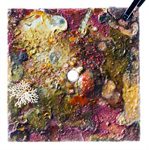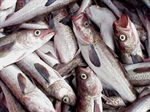Waters Vast and Cold: NOAA and Partners Sail to the Gulf of Alaska to Study Ocean Acidification
The waters of Alaska are vast, cold and vulnerable to the effects of ocean acidification. Although these effects have been characterized in the Bering, Chukchi and Beaufort Seas, on Monday July 13 NOAA and partners will depart to survey new waters in the Gulf of Alaska. Researchers from NOAA’s Pacific Marine Environmental Laboratory (PMEL) and University of Alaska Fairbanks (UAF) will set sail on the NOAA ship Ronald H. Brown to survey ocean chemistry and its connections to the base of the food web in the Gulf of Alaska.
“This cruise offers the unique opportunity for data to be collected throughout the Gulf of Alaska,” said Dr. Jessica Cross, chief scientist for this expedition, “This will be the first broad scale, comprehensive survey in this area.”








